C-terminal Sequence Analysis
Proteins are composed of a series of amino acids linked by dehydration synthesis, containing a free amino group (N-terminus) and a free carboxyl group (C-terminus). The C-terminus, like the N-terminus, holds significant importance in the structural analysis of protein molecules.importanceand is essential for the complete primary structure of proteins. Determining the C-terminal sequence is of great significance.
Based on the dual quality certification system of CNAS/ISO9001, Beijing Biotechpack Biotechnology Co., Ltd. has established a protein C-terminal sequence analysis service for different categories of biological products, based on the principle of peptide mapping (mass spectrometry), which can determine the C-terminal sequence of proteins, antibodies, vaccines, peptides,recombinantcollagen, and other biological products.
Technical Principle
Currently, there is no developed technology for C-terminal sequence determination similar to Edman degradation, so protein C-terminal sequence confirmation services still rely on a mass spectrometry platform. Complementary proteases are selected based on the theoretical sequence information of the target protein to cleave the protein, producing two C-terminal peptide fragments of different lengths suitable for ionization. These are analyzed by mass spectrometry to mutually verify and ultimately determine the protein C-terminal sequence.
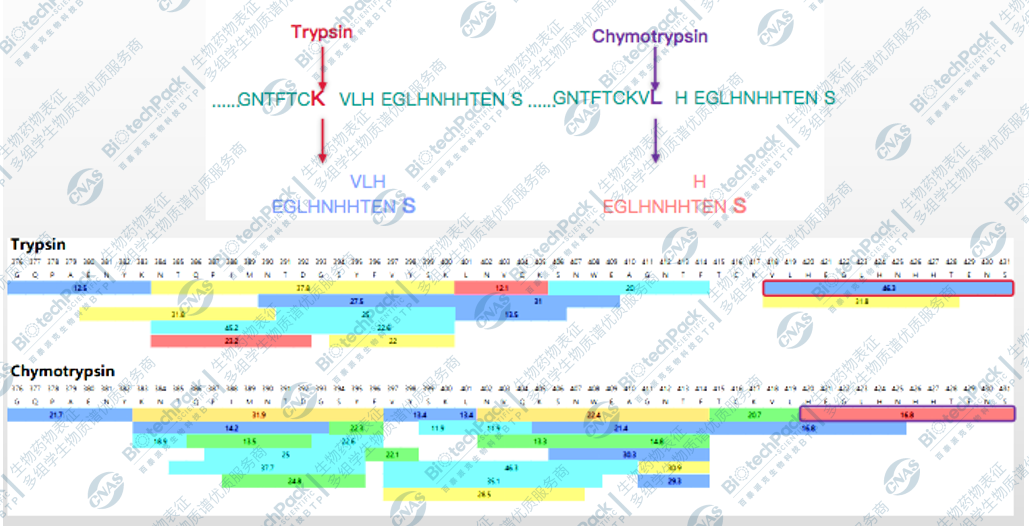
Attached are common protease cleavage conditions and sites:
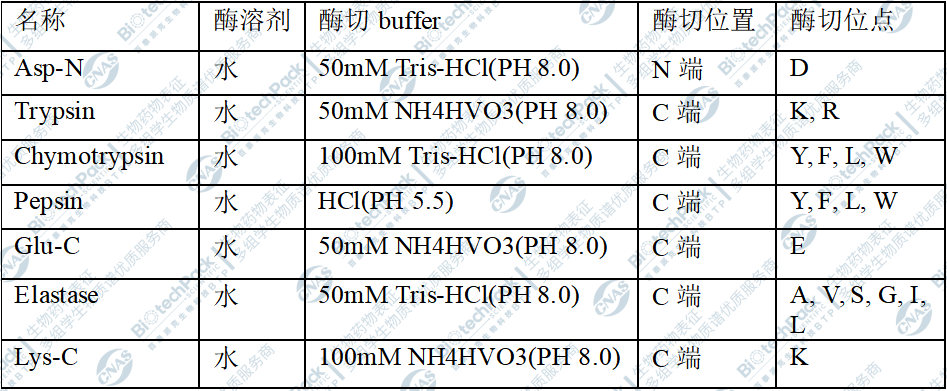
Experimental Instruments
• Nano-scale high-performance liquid chromatography: Easy-nLC 1200;
• Hybrid quadrupole-Orbitrap mass spectrometer: Q Exactive™ Hybrid Quadrupole-Orbitrap™ Mass Spectrometer.
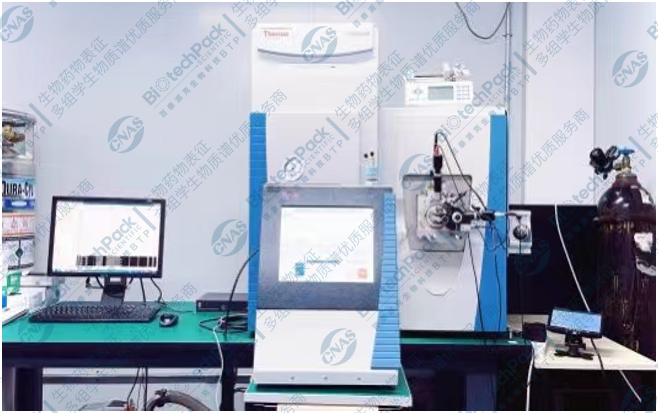
Case Illustration
After suitable protease cleavage, the sample protein is broken into peptide fragments mostly 6-28 amino acids long. The total ion chromatogram generated from mass spectrometry analysis is as follows:
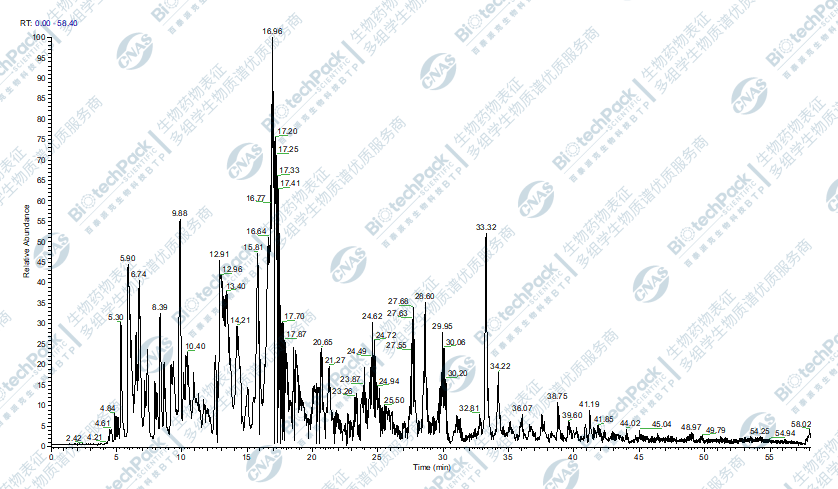
Sample Total Ion Chromatogram (TIC)
(The horizontal axis represents time (min), and the vertical axis represents relative signal intensity)
From the primary mass spectrum, the molecular weight of the complete peptide fragment can be obtained, mass = (m/z-1)*z
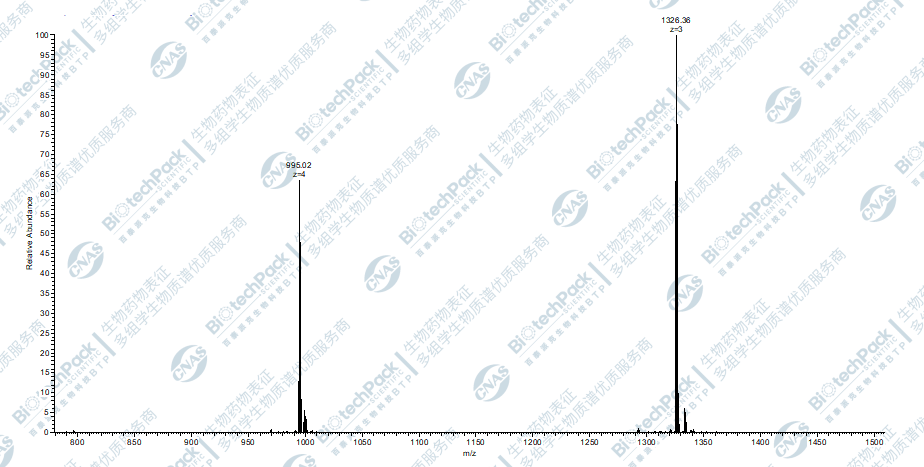
C-terminal Peptide Primary Mass Spectrum
(The horizontal axis represents detected m/z values, and the vertical axis represents relative signal intensity)
The secondary mass spectrum provides the fragment ion m/z values of the peptide fragment, which is broken from the peptide bond position into fragment ions in the mass spectrometer. The ions near the N-terminus of the peptide are b ions, and those near the C-terminus are y ions (For example, in the secondary spectrum, the peptide fragment KTSTSPLVKSF, after secondary fragmentation, fragment ions K and TSTSPLVKSF are b1 and y10 ions respectively, and fragment ions KT and STSPLVKSF are b2 and y9 ions respectively). The more the theoretical fragment ion m/z matches the detected values in the secondary spectrum, the higher the confidence level. The C-terminal peptide sequence is determined through the secondary fragmentation information of the peptide. and
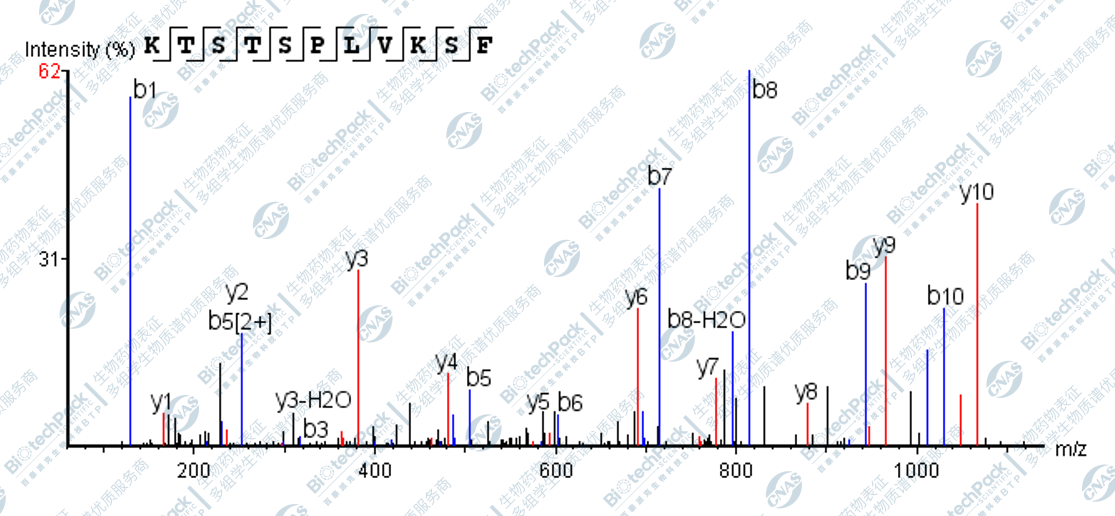
Peptide Secondary Mass Spectrum
(The horizontal axis represents detected m/z values, and the vertical axis represents relative signal intensity)
In actual projects, at least two complementary proteases are used to cleave the target protein, resulting in two C-terminal peptide fragments of different lengths. By verifying the sequences of these two C-terminal peptide fragments against each other, the protein's C-terminal sequence information is ultimately determined.
CommonTypicalIssues
Question 1: After protease cleavage, proteins break at specific sites. How do we determine that the C-terminal peptide is indeed the protein's C-terminus?
Answer:During data analysis, peptides with an N-terminal at the cleavage site and a C-terminal not at the cleavage site are selected, ensuring the peptide is formed by cleavage and not a random impurity peptide, and the peptide's end is consistent with the reference end.
Question 2: If the analysis results show only peptides with a C-terminal cleavage site, how can we further confirm the specific position of the C-terminus?
Answer:This result is usually caused by two scenarios. The first scenario is that the protein's C-terminus is exactly at the cleavage site, which can be ruled out by simultaneous analysis with different cleavages. The second scenario is that the protein C-terminus is very close to or far from the cleavage site, resulting in a remaining fragment that is too short or too long, with poor fragmentation, making it unrecognizable by analysis software. We can establish a gradient database, adding one amino acid per sequence compared to the previous one, and reanalyze using the gradient database.
Related Services
How to order?





